
I was reminded about the nursery rhyme about Little Miss Muffet. She was the gal who sat on her tuffet eating her curds and whey. My version of that nursery rhyme would have gone something like this:
Little Miss Foodie sat on her booty
Learning about curds and whey.
Rode on bus without a lot of fuss
And enjoyed the cheese of Wisconsin, USA.
This past week Fortune Fish & Gourmet invited me to join them with some of Chicago’s finest chefs and cheese mongers on a 3 day Wisconsin Dairy Industry Tour. The great folks at the Wisconsin Milk Marketing Board did an amazing job organizing the trip.
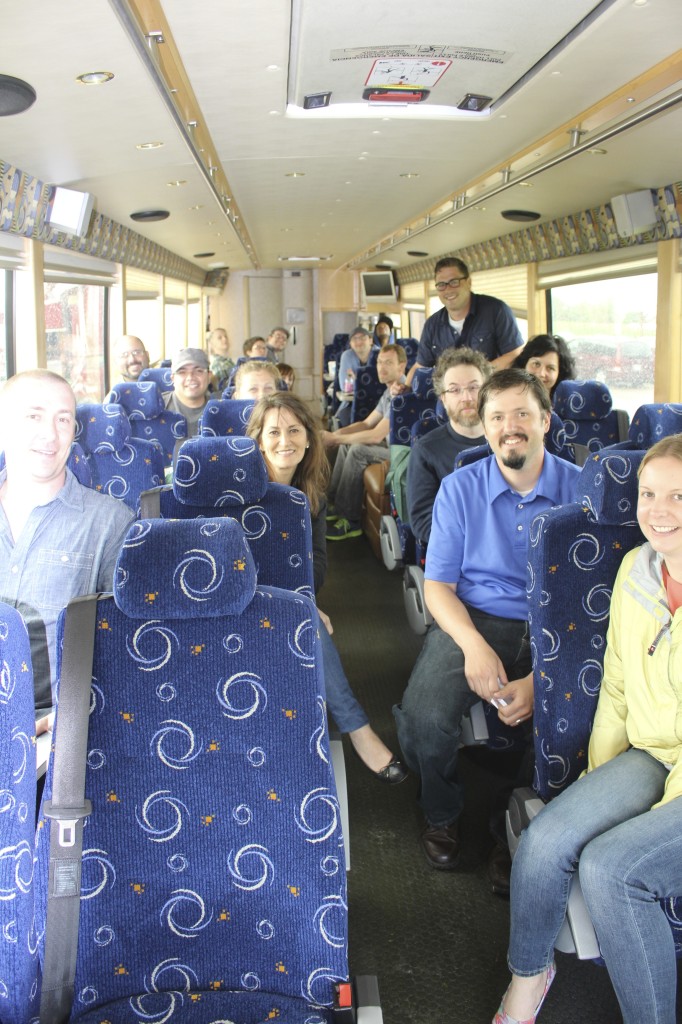 One of the biggest things I learned was discovering that the production side of cheese making actually made cheese EATING more exciting. (Is that possible??) So today’s post will be dedicated to the art of cheese making and Monday’s post will be all about the cheese I ate.
One of the biggest things I learned was discovering that the production side of cheese making actually made cheese EATING more exciting. (Is that possible??) So today’s post will be dedicated to the art of cheese making and Monday’s post will be all about the cheese I ate.
What is the first thing you need to make cheese?
There are a lot of “wheys” to answer this question but I will say you need an awesome farmer. (Please note that I will keep my puns to a moo-nimum.)
All cheese is made from milk. So you need a farmer to raise the cows or goats or sheep or even water buffalo. Think of the farmer as the milk harvester.
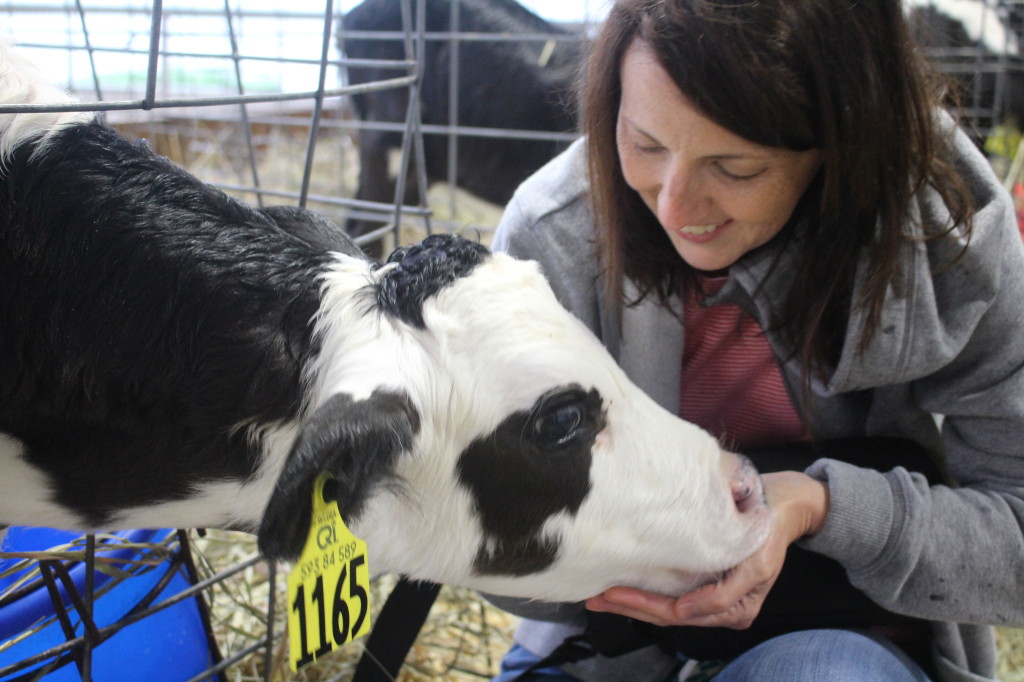
After the milk is harvested, it will go through a series of actions to produce its own unique variety of cheese.
Tell me more…
Incoming milk from Wisconsin dairy farms is tested for quality and purity. Fat levels are adjusted, depending on type of cheese being made. (Starter cultures, temperature and times come into play too but we aren’t there yet….keep reading.)
Did you know that it takes around 10 pounds of milk to get 1 pound of cheese??
Depending on the cheese, the protein to fat ratio has a specific target number so that a quality cheese can be achieved. This is all part of the milk intake into the creamery.
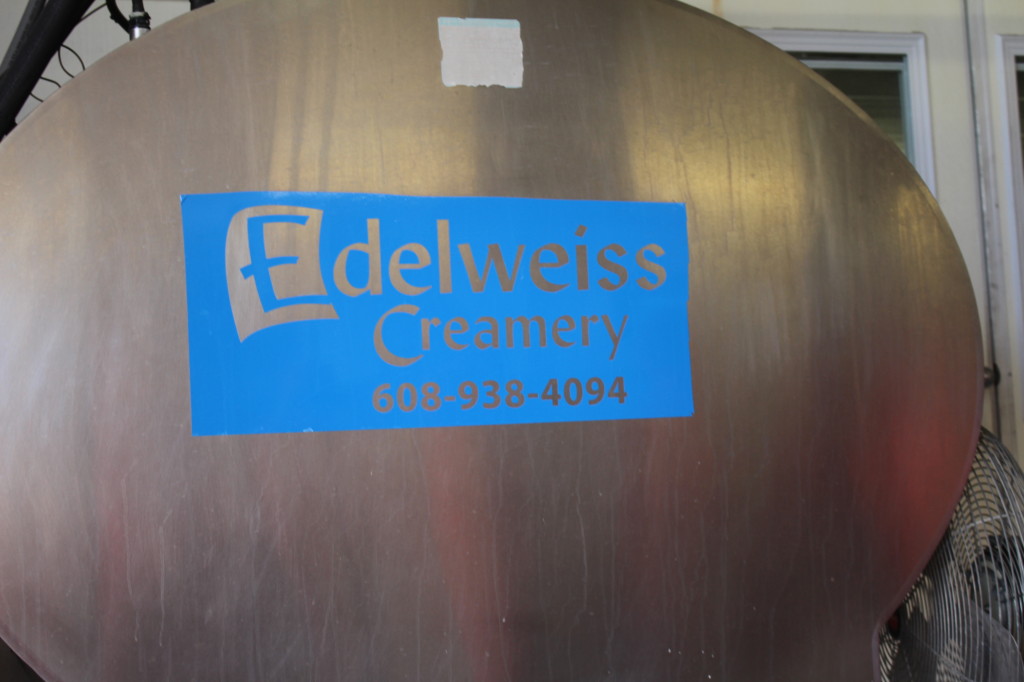
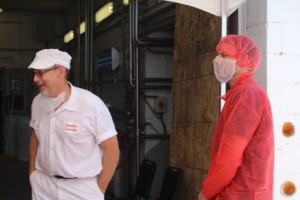
Raw milk cheeses are NOT pasteurized but milk for other cheeses ARE heat-treated and then cooled a bit. Pasteurized milk HAS to be cooled a little bit after pasteurization because cheese is made with a starter culture (or a good bacteria).
These cultures are commonly called LAB (lactic acid bacteria) because of their mechanism of action. (Their energy comes from the lactose in the milk and the end product is lactic acid.) The science behind how this all works moo-velous and takes a lot of edu”cow”tion. (That one was a really bad pun.)
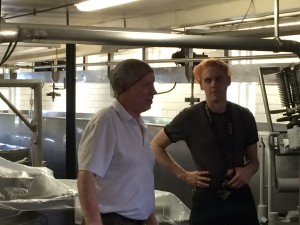
Think of the starter culture acting like yeast in a loaf of bread. When you are proofing that yeast, you can’t have your water too hot or the yeast will die and your bread won’t rise. The same kind of thought goes with cheese processing. (For raw milk cheeses, milk may have to be brought UP to a certain temperature for the culture to be set in motion. I believe it needed to be around 90°F to activate the culture.)
The different cultures that are added to the milk are part of the determining factor that helps give your cheese flavor and a specific texture.
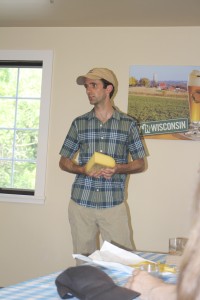
The cultured milk has to be held at a certain temperature for a specific period of time to ripen. (Or for if it helps the at home bread makers understand better…to proof.) The bacterium grows during this time and the pH lowers slightly.
But Barb…when does it become cheese??
I’m glad you asked. The catalyst that really gets things moo-ving is something called rennet. Honestly, rennet is one of those things I probably could have lived without knowing about since it is an enzyme produced in a mammal’s stomach. (And the creameries use rennet from a lot of different animals including camels!!!)
But the rennet magically works with the milk protein to form what will eventually be a curd. (If you put the word “magically” behind rennet it all of the sudden seems appetizing.)
When the rennet is added, it isn’t disturbed. (If you have ever made jelly, it sort reminded me of how pectin works. It coagulates. (Actually, now I understand why MY belly is so jiggly…it is my undisturbed rennet.)
This massive hunk of jelly is then cut into chunks (or curds), stirred up and heated. (The temperature and curd size also help determine the softness or hardness of your cheese but we’ll talk more about that later.)
Where does the whey come in??
Well the whey is the liquidy part that separates off the cheese during all of this heating and stirring. It is eventually drained off and sold on the blackmarket to kids sitting on tuffets. (I just wrote that to see if you were still paying attention.)
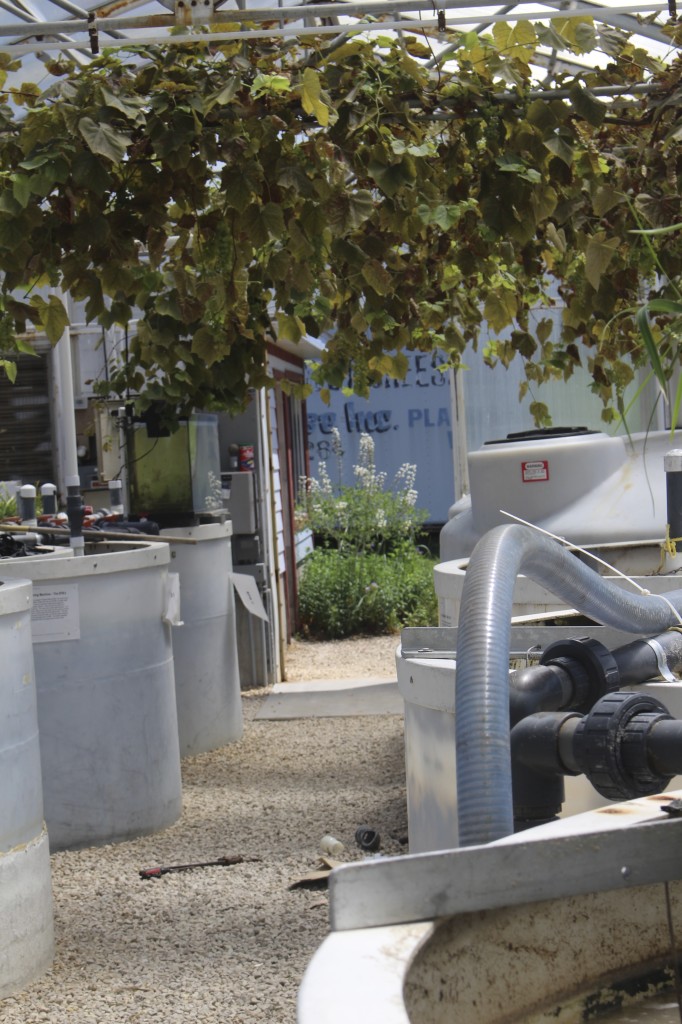
What is left is sort of a slab o’ cheese. The process continues as different handling techniques are applied and the desired pH is achieved. The mats are cut into smaller pieces (like the World’s biggest cheese grater) and then some real expertise is put into action.
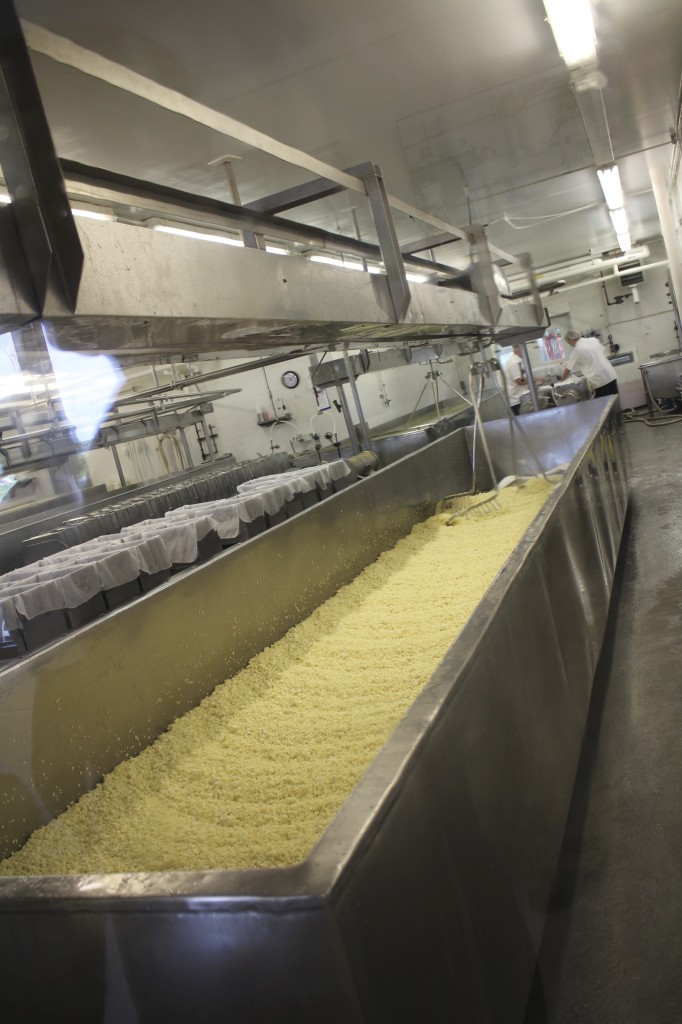
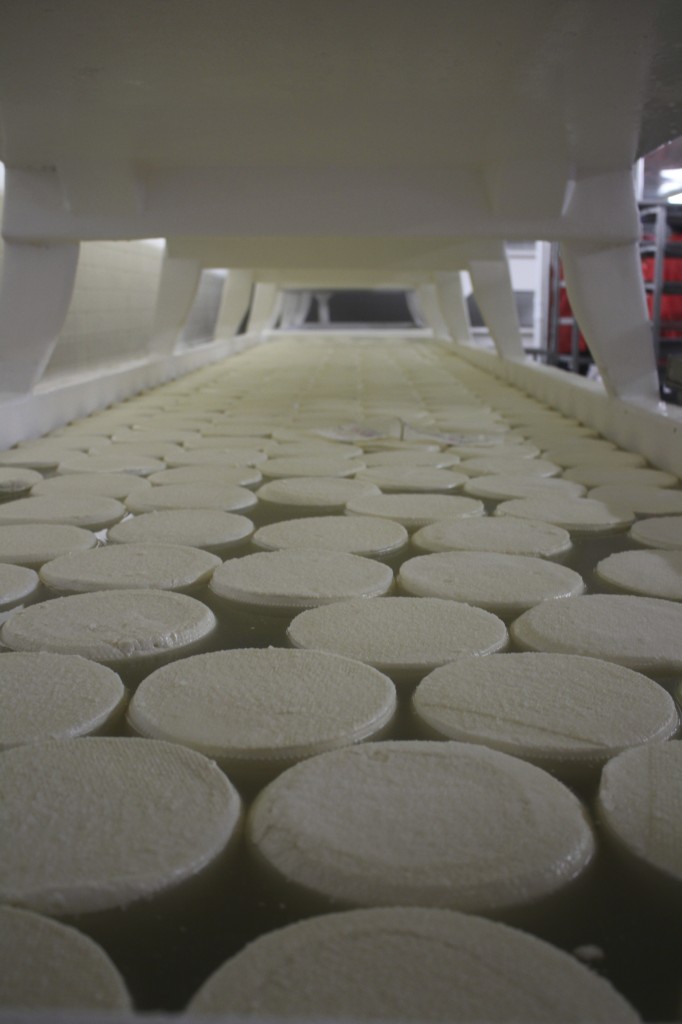
As the smaller pieces are placed into molds, more whey is pushed out and the curds intertwine into each other to form whatever shape is desired. Cheese makers can also add salt before they are placed in the mold or in some cases the cheese is washed in a brine (salt water) solution.
Special thank you to the folks at Carr Valley Cheese because tasting the curds in different stages is what finally made me fully understand how the cheese tasted during this part of the process. (It was a true light bulb moment.)
The formed cheese is then stored in coolers or caves and aged. (If I had a “moo”illion dollars, I’d have a cheese cave.) The age of the cheese is a HUGE determinant in how that cheese will taste and the texture.
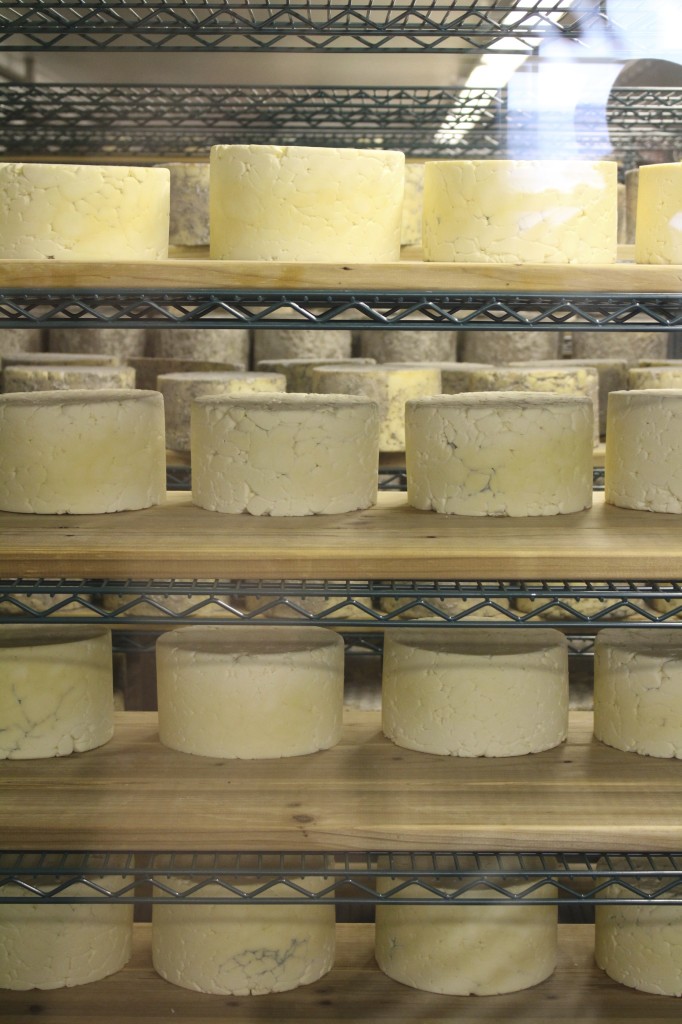
Everything from the room temp to the humidity is controlled to make sure the cheese is up to standards. The entire environment of the cheese is monitored. (Raw milk cheese is cured at least 60 days and has A LOT of rules but the creameries don’t seem to mind the challenge because they produce such great products.)
Thank you to Edelweiss Cheese, Roelli Cheese, Hook’s Cheese, Carr Valley Cheese, Uplands Cheese and Cedar Grove Cheese for tea”cheese”ing me so much!!!
Part 2 will be all about the different cheeses you should keep an eye out for next time you are at the market. I know you will come back and read it…if you know what is Gouda for you. (I promise no more puns.)
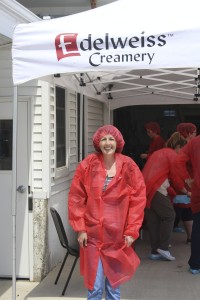


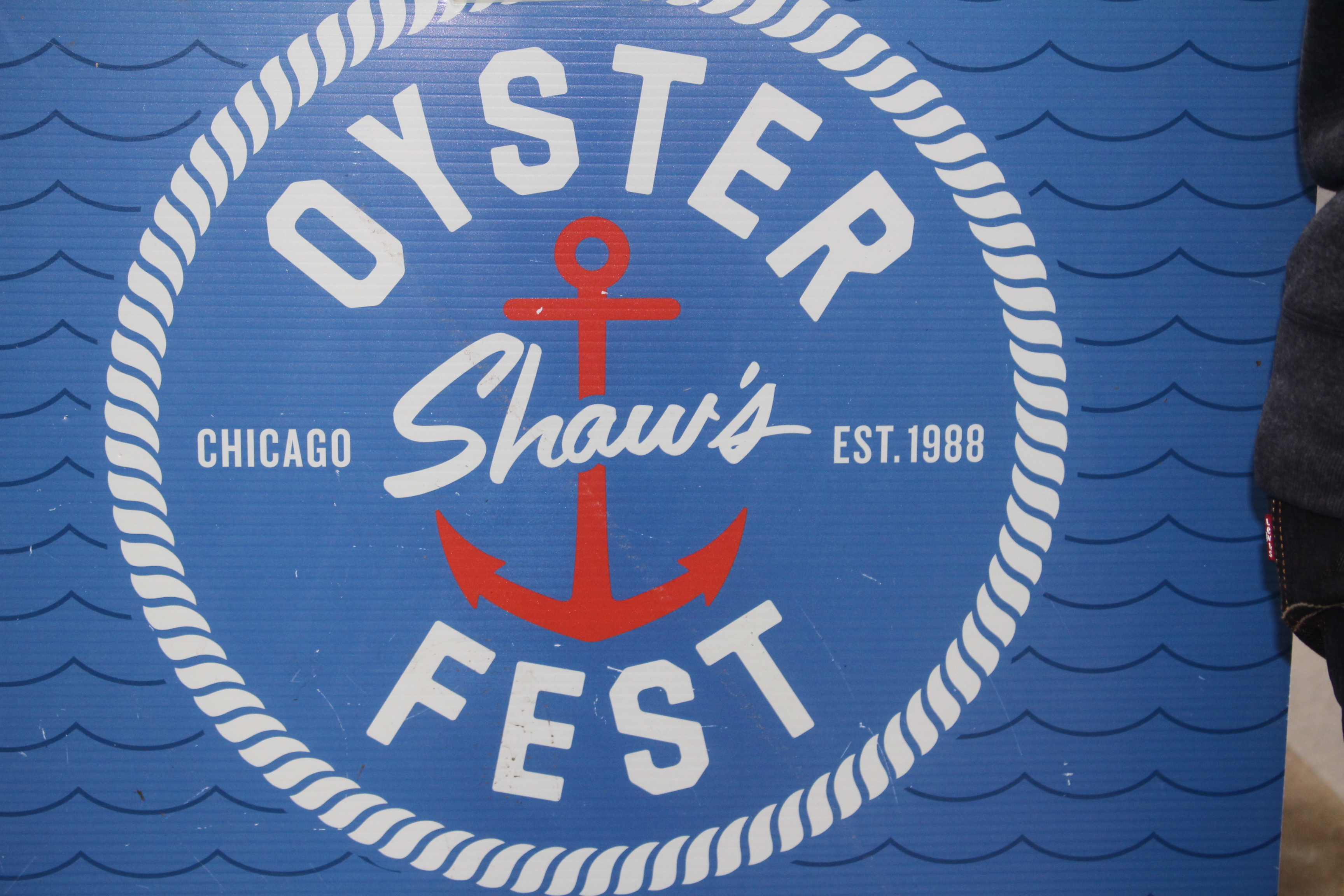
It’s always so much fun to live vicariously through your adventures and this one is really fun. One of my favorite things is to go to the farmers market on Saturday mornings and sample and buy cheese to enjoy later in the day or week. Can’t wait for the next installment. Glad you got to go on this adventure and happy to tag along for the ride!
Thanks!! It was an amazing (and exhausting) trip. It makes me want to move to Wisconsin and make cheese. : )
Frei Klavier
I ran into this page accidentally, surprisingly, this is a amazing blog :-). The site owner has carried out a superb job of putting it together, the info here is really insightful. You just secured yourself a guarenteed reader.